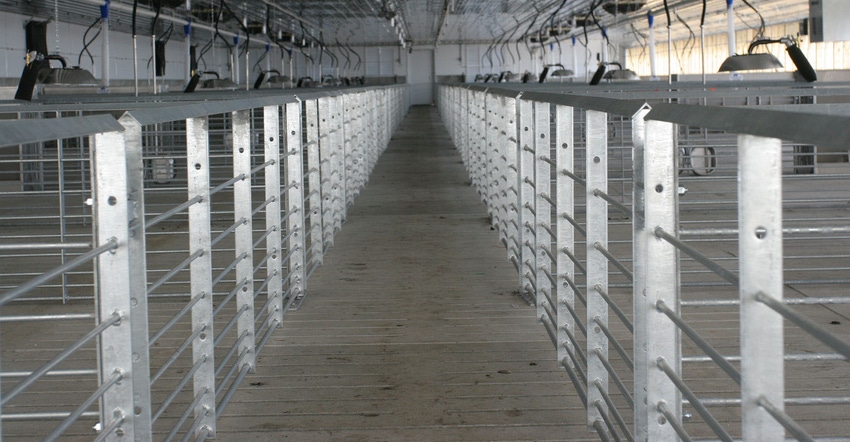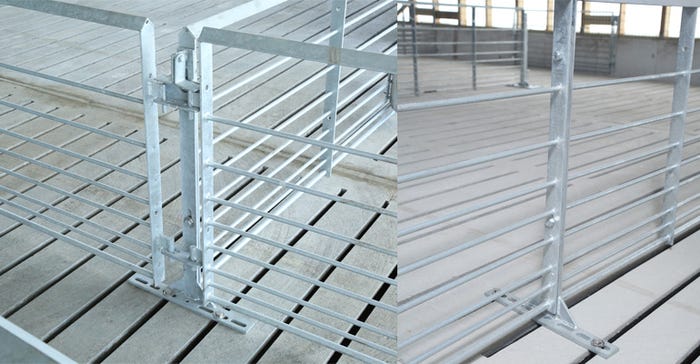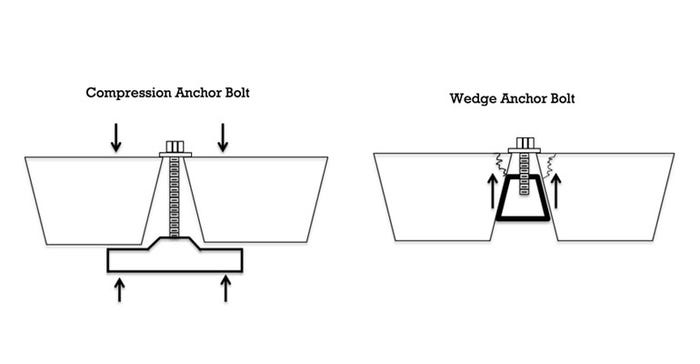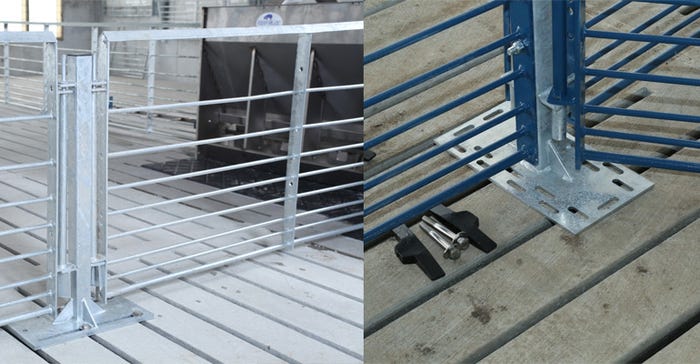Selection and maintenance of steel penning
2020 Iowa Pork Congress seminar put focus on increasing equipment life.
February 18, 2020

Sponsored Content
The 2020 Iowa Pork Congress hosted a seminar, "Building Maintenance and Longevity." Hog Slat sales rep, John Boleyn, joined the expert panel to discuss maintenance practices designed to increase the working life of hog facilities. Here are some excerpts from Boleyn's presentation covering the selection and maintenance of steel penning.
Typical building designs from 1990-2005 consisted of 40-foot wide buildings with 25-30 head per pen. The smaller pen sizes meant panel lengths did not exceed nine to 10 feet in length. Bolt-on-legs attached to the bottom rods were adequate for supporting gates and animal pressures.
As production flows increased group sizes, the cost savings of constructing larger buildings moved the typical widths to 50 to 80 feet. Pens capacities of more than 100 head became commonplace along with market weights increasing to over 300 pounds.

The increased pen lengths and widths, along with heavier pigs, created a need for better support and anchoring systems. Here are several key points to consider when purchasing new or replacement penning.
Keep individual panel lengths under nine feet.
Position full height flat bar posts with gussets in the junction between the panels.
Secure each post to the slats with two T-bolt fasteners.
Pen designs calling for split alleyway gates should use a post with an extra-wide base allowing for four anchor bolts.

Choose compression style T-bolts as fasteners instead of a wedge style T-bolt. Tightening a wedge T-bolt forces it between the slats, eventually causing the edge of the slats to crack and "pop" out. Tightening a compression T-bolt instead presses the force against the slat from the top and bottom. A compression bolt will itself break before cracking the slat. Never, under any circumstance, should an expansion bolt, requiring drilling into the slat, be used to attach posts.
Compare the cost of galvanized penning and stainless-steel materials. An incremental increase in the initial cost translates into a substantially longer equipment life cycle.

Routine maintenance is essential for maximizing penning longevity. Follow this checklist between every turn of pigs.
Tighten any loose T-bolts bolts or wall anchors. Loose T-bolts allow the posts to move and, in extreme cases, can cause damage to slats. For repairing loose anchors in solid concrete (walls and load-out areas), consider using an epoxy-based product like Epo-Set 400. Applied with a caulk gun, Epo-Set secures loose anchors without removing the studs and redrilling.
Replace deteriorating feet and posts. Consider adding additional bolt-on-legs between posts to add rigidity to long divider lengths.
Weld and repair damaged dividers. DIY Cut and Weld panels simplify on-farm repairs with divider panels and sliding end uprights. Slide the upright to the desired length, weld in place, cut the excess rods, and attach clips if needed.
It is always more cost-effective to maintain equipment than to replace it. Adding steel penning to the routine barn list maintenance list goes a long way to maximizing its useful life.
About the Author(s)
You May Also Like



